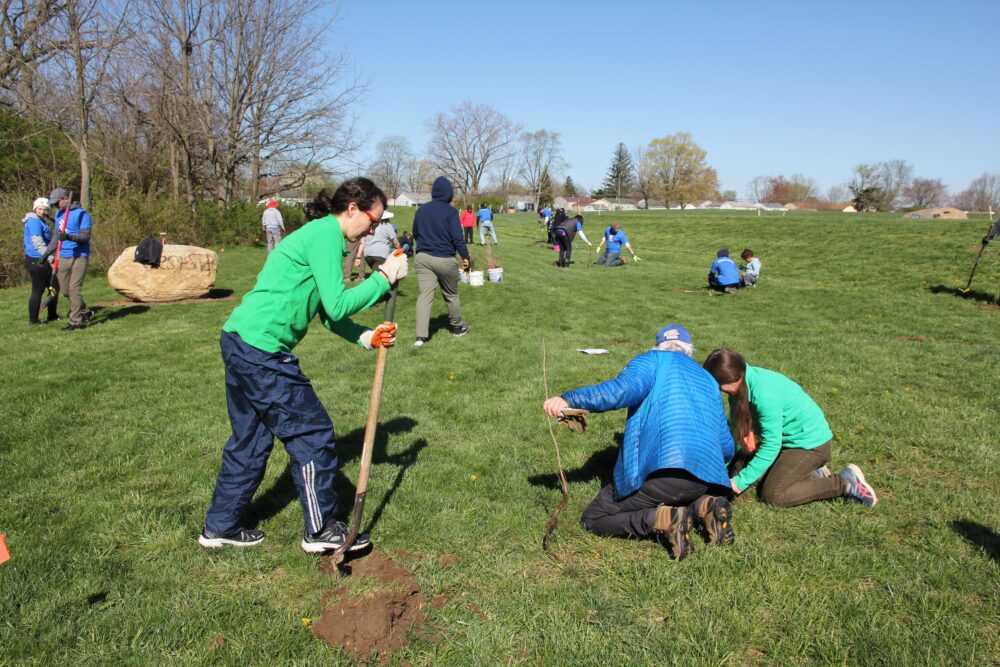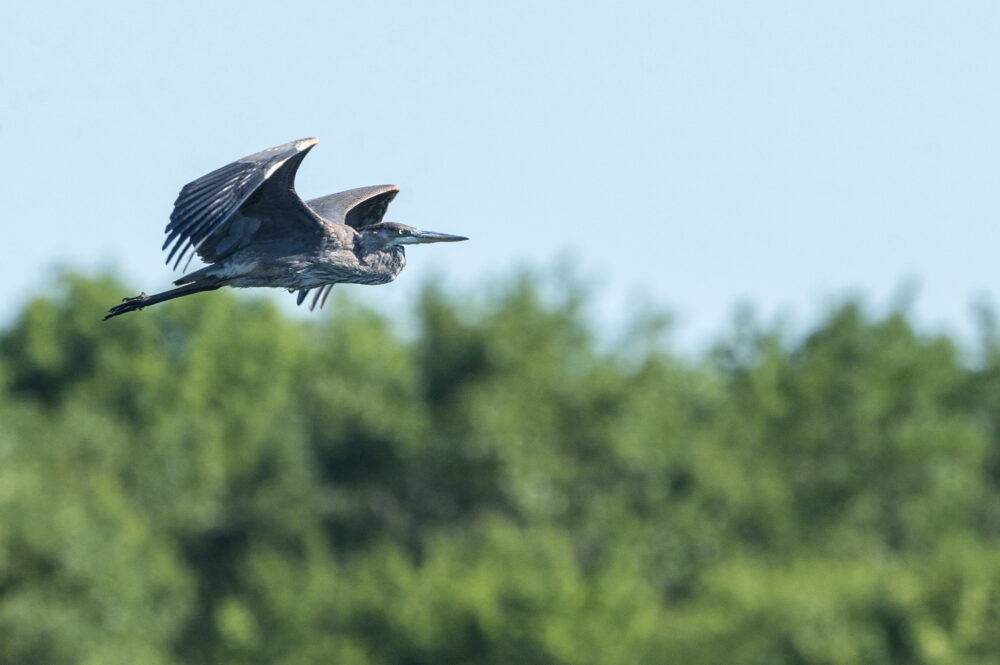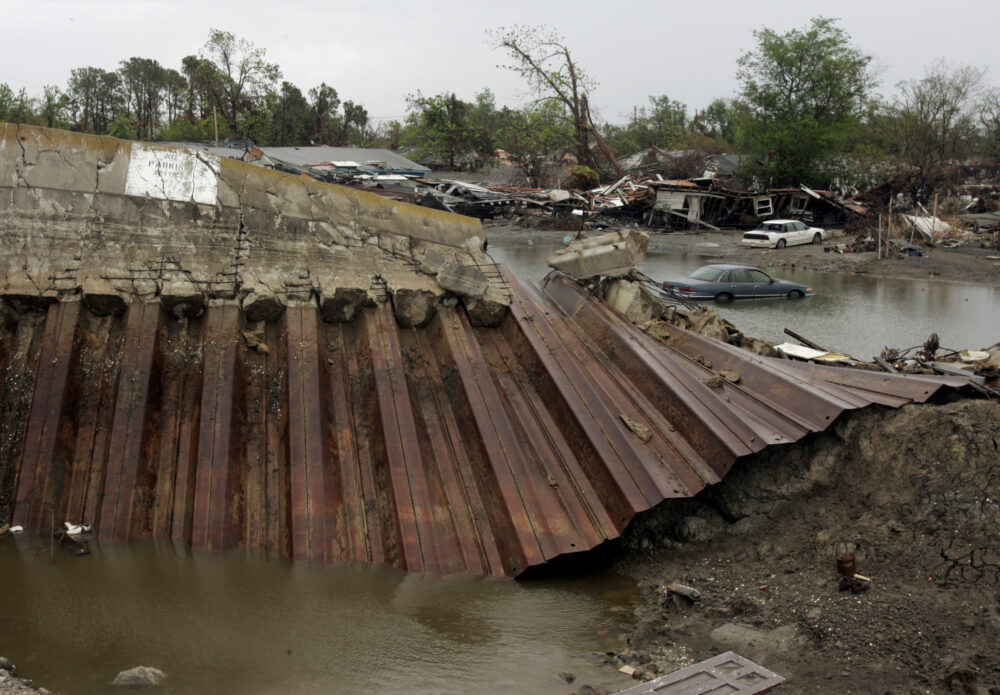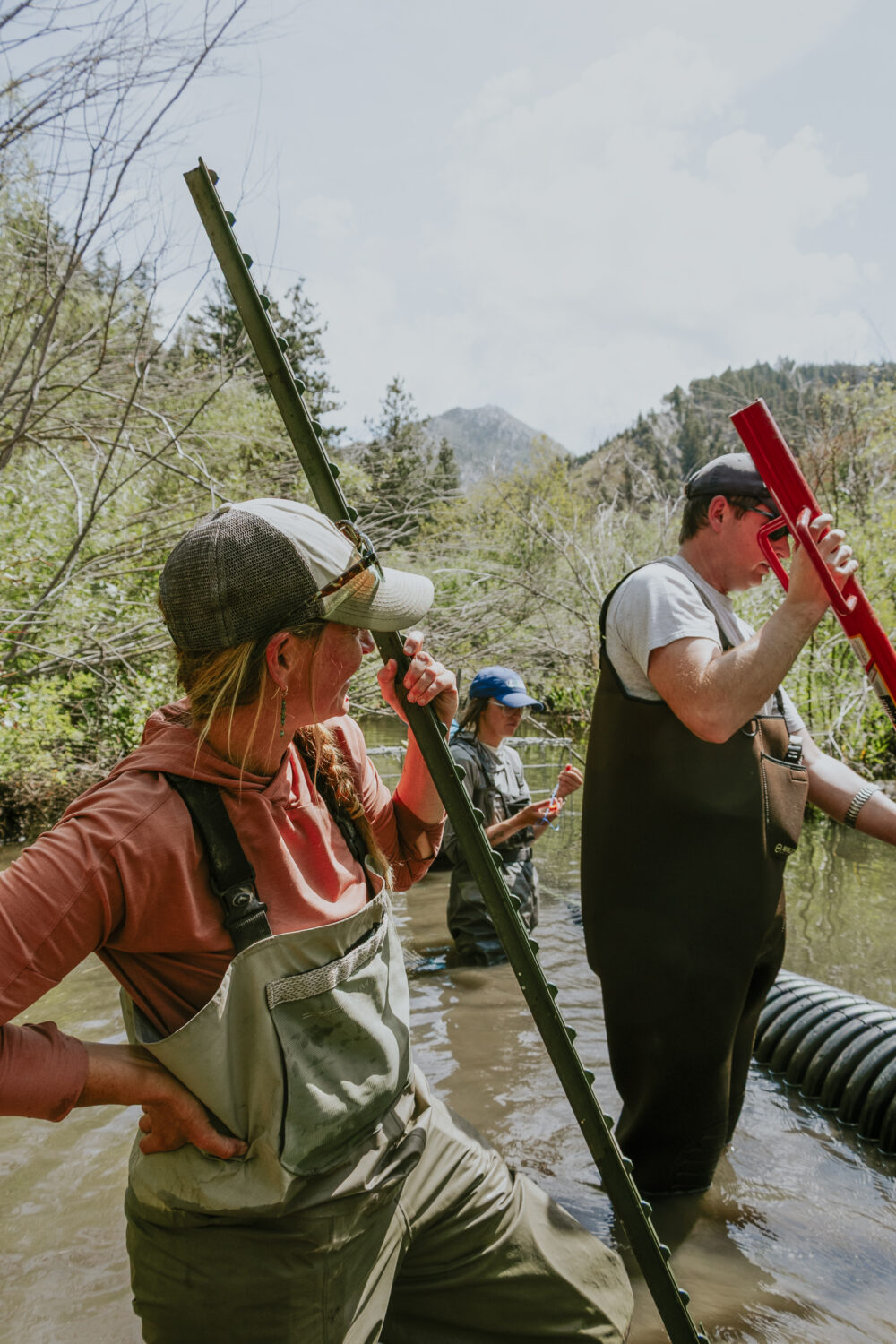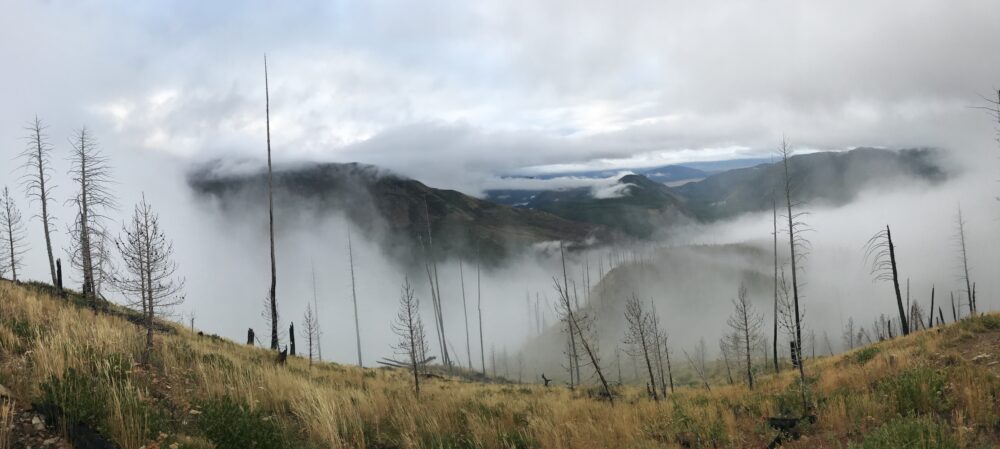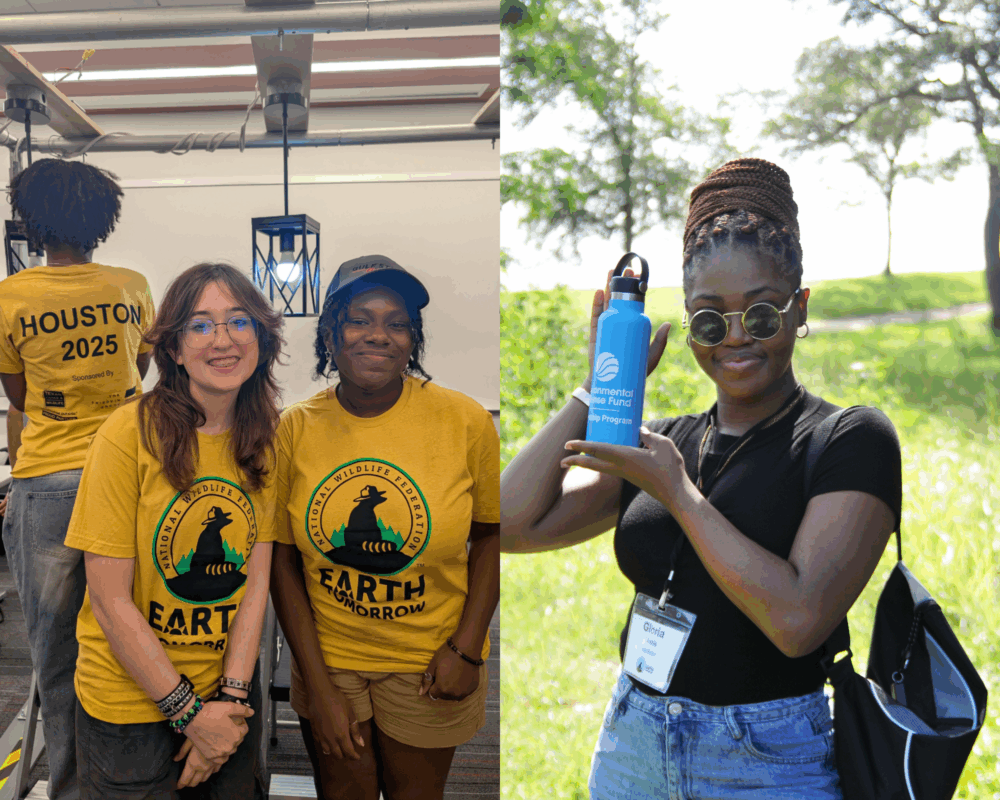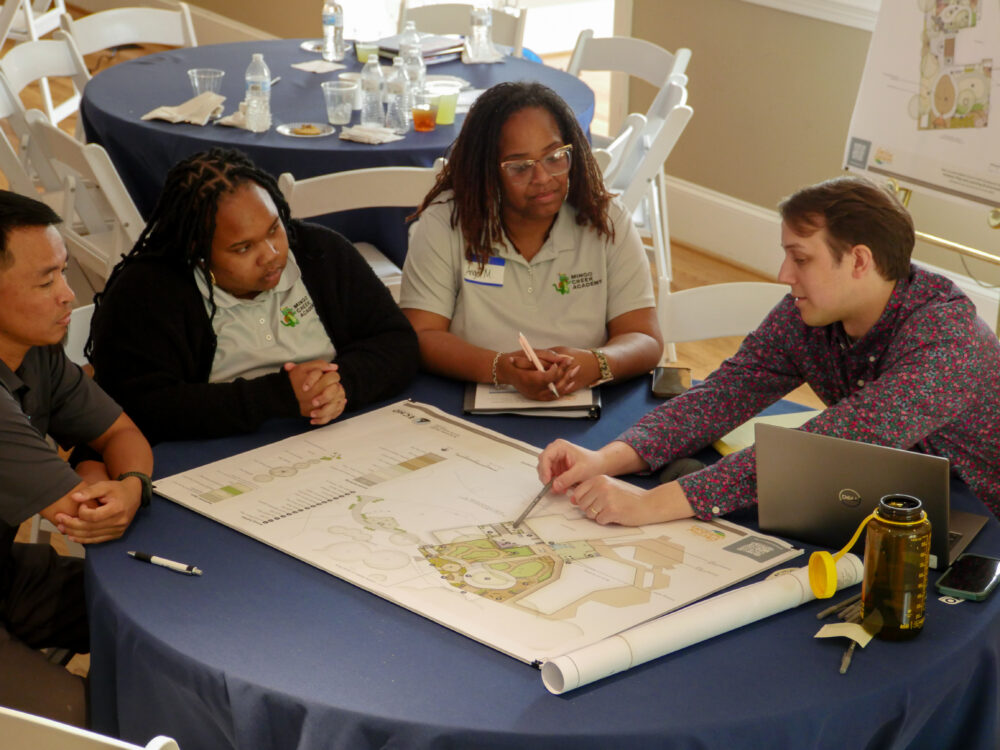We have much more to do and your continued support is needed now more than ever.
Education Newsletter March 2021
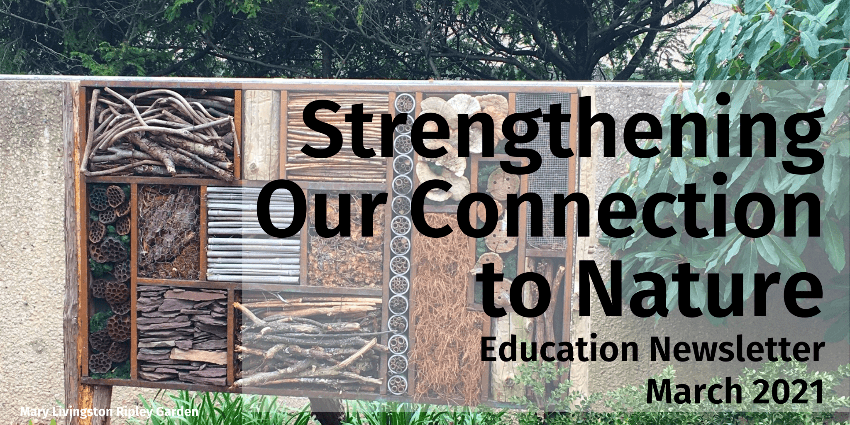
A relationship is defined as how two or more concepts, objects, or people are connected. Often relationships are described or illustrated in silos, one existing separately from the other. However, our relationships with each other, with wildlife, and with the land are inextricably interconnected. Our relationship to nature exists where we are at any given moment; it isn’t limited to being present in the vast expansive landscapes of our National Parks. Whether surrounded by busy streets and towering skyscrapers, remotely located and miles from our nearest neighbor, or somewhere in between, we exist in nature. Over the next couple of months, our theme will focus on interconnections and relationships – take a moment to change, modify or affirm your mindset – shining a light on your relationship to nature; for where you are, nature is.
Biodiversity Pathway
Recent reports indicate a growing number of species threatened with extinction. Therefore, more important than ever are educators’ ability to engage and support students as they develop relationships with nature – being in nature and conducting explorations and investigations. Teachers have the opportunity to touch on a wide range of related topics, such as
- impacts to food production and subsequent harm to frontline communities
- the loss of forests, altered marine chemistry, and accelerated loss of our few remaining wetlands.
A large percentage of the world’s biodiversity is found on traditional Indigenous land. Use this knowledge to engage students with traditional ecological knowledge and Indigenous ways of knowing and understanding. Check out the lesson from Native Knowledge 360, American Indian Responses to Environmental Challenges. No matter where you call home, there are opportunities for action. Collaborate and co-create a plan to increase habitat on school grounds or participate in a biodiversity-centered-community science project. Get inspired by reading how Los Angeles is becoming a leader in protecting and restoring biodiversity.
Then work with students to conduct an audit through the Eco-Schools USA Biodiversity Pathway (with a modified version available to remote learners through Eco-Schools USA at Home). Explore other resources on our Virtual Learning page that focus on biodiversity. These include several grade-banded lessons that use the free, iNaturalist app, along with video resources available through our Eco-Schools USA YouTube channel.
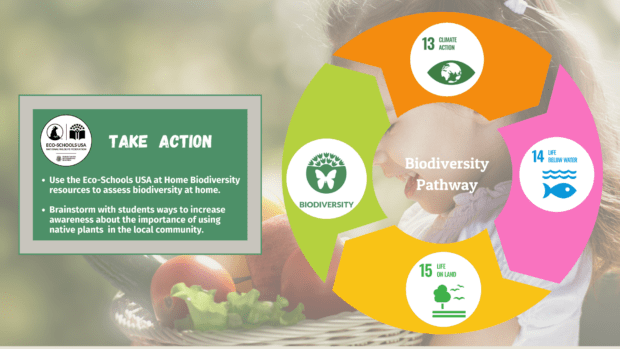
Take Learning Outside
Not everyone has the vision to see the possibilities provided in a vacant lot. So this month, we are sharing two great examples of transformation in action. First up is Detroit Hives, whose mission is “to create sustainable communities and bee populations by transforming vacant lots into pollinator-friendly spaces.” Co-founders, CEOs, and Detroit natives, Nicole and Tim, are committed to raising awareness for our nation’s bees while building transformational relationships and modeling sustainable community practices. Follow Detroit Hives on Instagram to learn more about their mission and their recent expansion to Kansas City, Missouri.
Our 2nd transformation comes from a recent story on the blog—Vacant Lots to Pollinator Habitat in Philadelphia, PA—detailing how over two dozen empty lots were converted into climate-resistant pollinator gardens. The project addresses the unique challenges presented by vacant lot restoration. It highlights the importance of native plants that are better able to withstand an extreme environment. Some of the project’s positive outcomes included improvement in diversity and connectivity of habitat, better flood mitigation, and enriched biodiversity.
A similar type of transformation is happening in urban, suburban, and rural schoolyards across the country. As we inch closer to 10,000 Certified Schoolyard Habitats®, we invite teachers to explore possibilities for transforming outdoor spaces to increase habitat for pollinators and create safe, outdoor learning spaces where all students can connect with nature.
Discover New Resources
The National Wildlife Federation’s (NWF) Sacred Grounds™ Program interconnects native plant garden solutions with faith-based communities. Sacred Grounds provides environmental benefits such as better stormwater runoff management and increased wildlife habitat but fills a broader community need for healing in safe, quiet spaces for all to access.
The Sacred Grounds program supports houses of worship and faith communities in achieving their visions around a wide range of interests and needs such as community building, increasing access to safe outdoor spaces for all, improving water quality, and creating new wildlife habitat.”
This video of the Sacred Grounds Program in action captures the essence of the program.
Learn About Wildlife
Head beneath the soil this month to engage kids in a conversation around Earthworms. Read the story Earthworms in the March issue of Ranger Rick® magazine. Students can learn more about the life of an earthworm and how they get around without any legs. Use the questions from the March Ranger Rick Educator’s Guide to discuss producers, consumers, and decomposers. Another activity found in the Educator’s Guide includes a template for budding writers to create and illustrate their own animal-centered feature story. Students can find more information about animal behavior, range, and diet in the National Wildlife Federation’s Wildlife Guide.
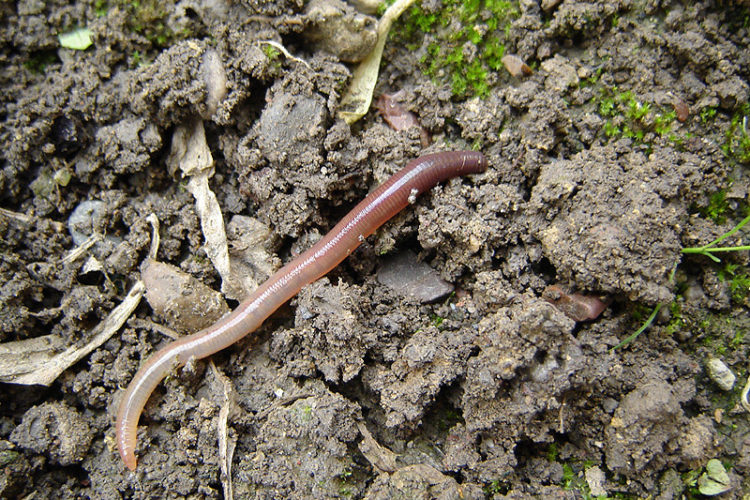
Green Opportunities
National Wildlife Federation
- High school groups and classes can learn about and prepare for tomorrow’s green workforce at the virtual NWF EcoCareers Conference on 4/7 & 4/8.
- There’s still time for youth 13-17 to enter the National Wildlife® Magazine photo contest before 3/28/21; find details along with wildlife photography tips & resources
- Students can work on pathways like Biodiversity, Consumption & Waste, Energy, and Watersheds from outside the classroom with the Eco-Schools USA at Home resources
- Virtual course: Climate Change: Building climate science knowledge to enact local change (grades 9-12)
- Early Childhood Health Outdoor’s (ECHO) resources, including How-To Guides and Nature Play at Home.
- Career Services Toolkit. Designed for career services professionals, guidance counselors, teachers, and other educational professionals to provide a framework and process for utilizing the National Wildlife Federation’s (NWF) EcoCareers resources in their classes, on their campuses, and in coordination with other academic and career development programming.
- Engage high schoolers in conservation projects, policy & action by signing up for access to a free annual digital subscription to National Wildlife magazine.
- Find virtual classroom resources for remote learning, including lessons, educational videos, Ranger Rick Family Guides, & wildlife and pollinator craft activities.
Grants | Award Opportunities
- NOW Youth Leadership Award, Deadline: 3/13/21;
- Applications are now being accepted for the 12th annual Craig Tufts Educational Scholarship Award for youth 8-18! Application deadline is 3/19/21.
- 2021-2022 NOAA New England Bay Watershed Education and Training (B-WET) Funding, Deadline: 4/1/21;
Other Resources & Opportunities
- Engage students in hands-on environmental STEM activities inspired by the Point of No Return documentary. Learn more about the initiative.
- Educators can participate in the NOAA Planet Stewards Book Club; explore the upcoming titles for 2021.
- Youth 11-18 can enter the 10th Annual Bow Seat Ocean Awareness Contest “Water Rising.”
- Participate in GLOBE Measurement Campaigns. These campaigns are great for virtual and in-person learning experiences.
- Learning about air quality? Explore STEM Online Learning Videos from General Motors, including How to Measure Air Quality Near Your Home.
- Learn more about marine ecosystems across the USA with the new National Marine Ecosystem Web Portal from NOAA.
- Get outside with Green Schoolyards America free Schoolyard Activity Guides.
- The World’s Largest Lesson – Introducing the Sustainable Development Goals to young people
Professional Development


